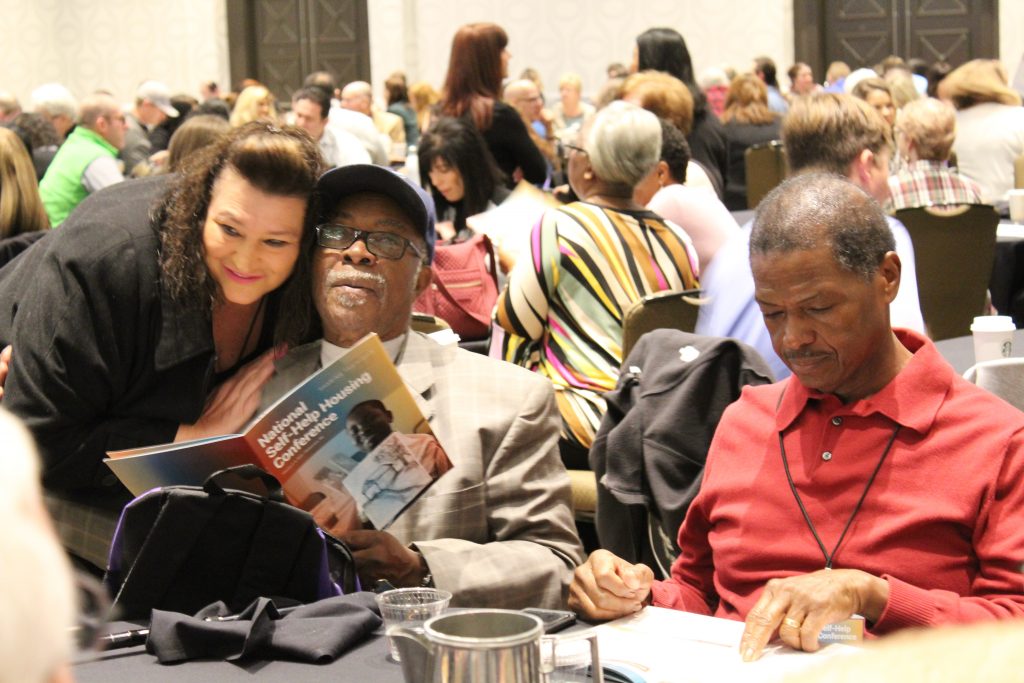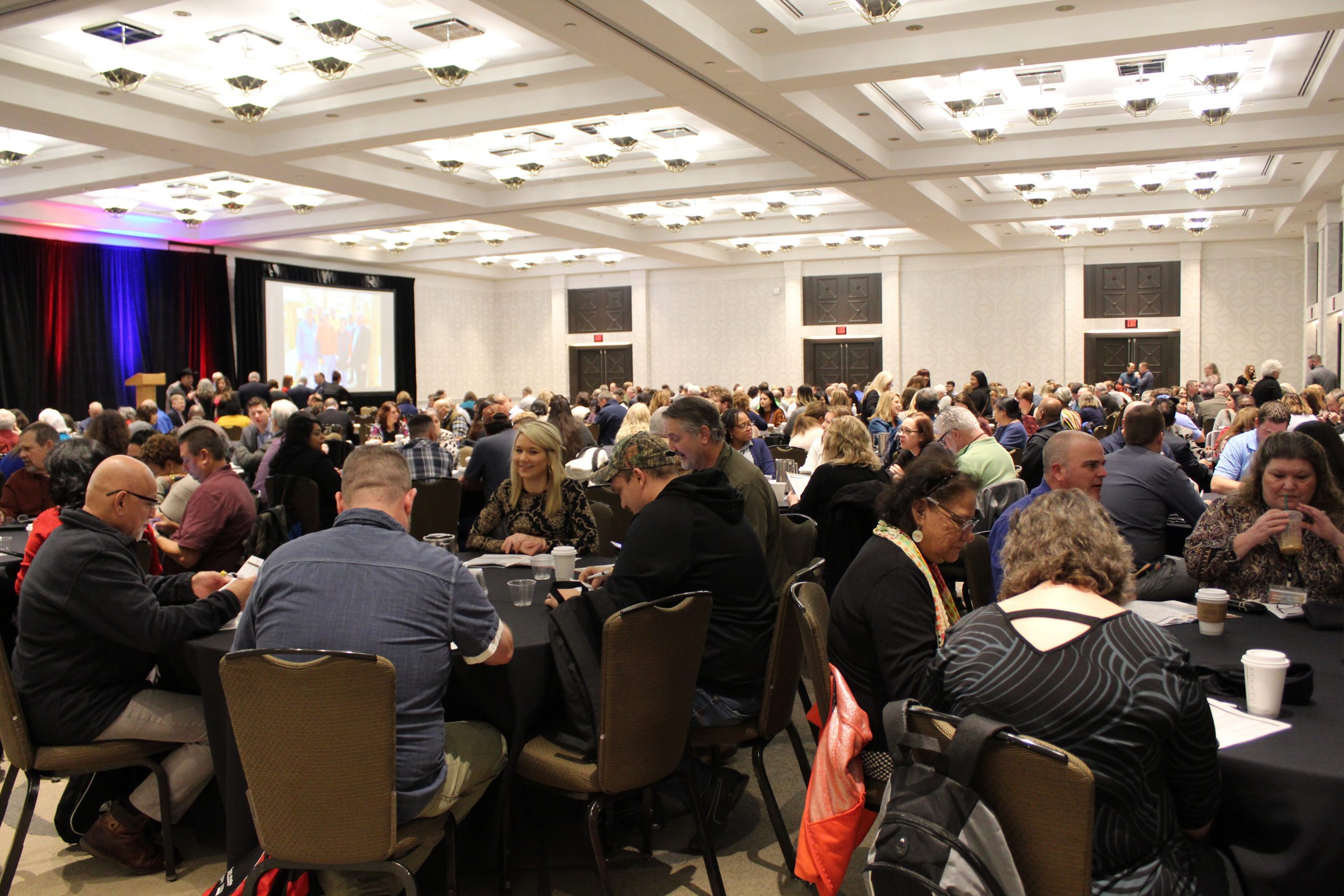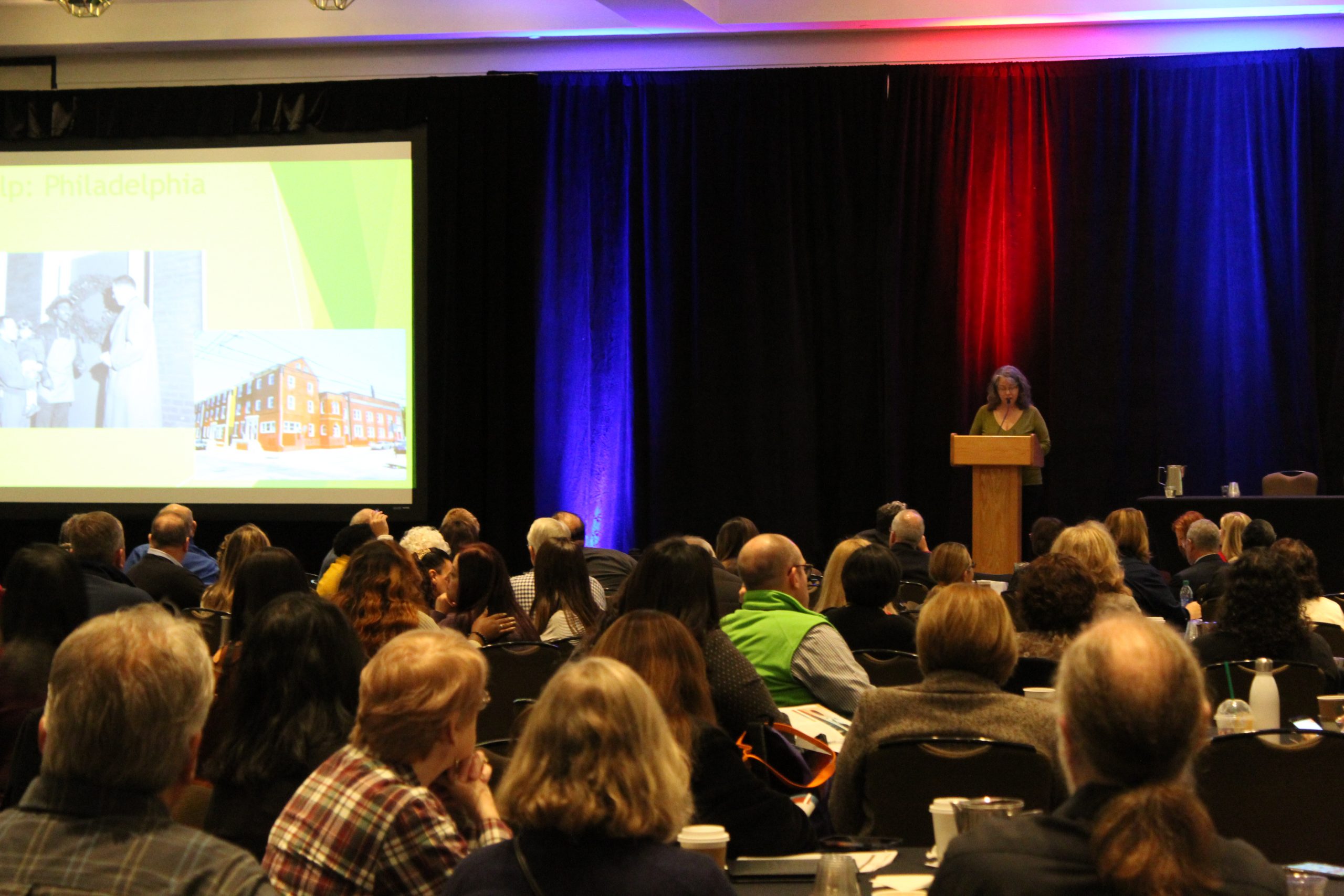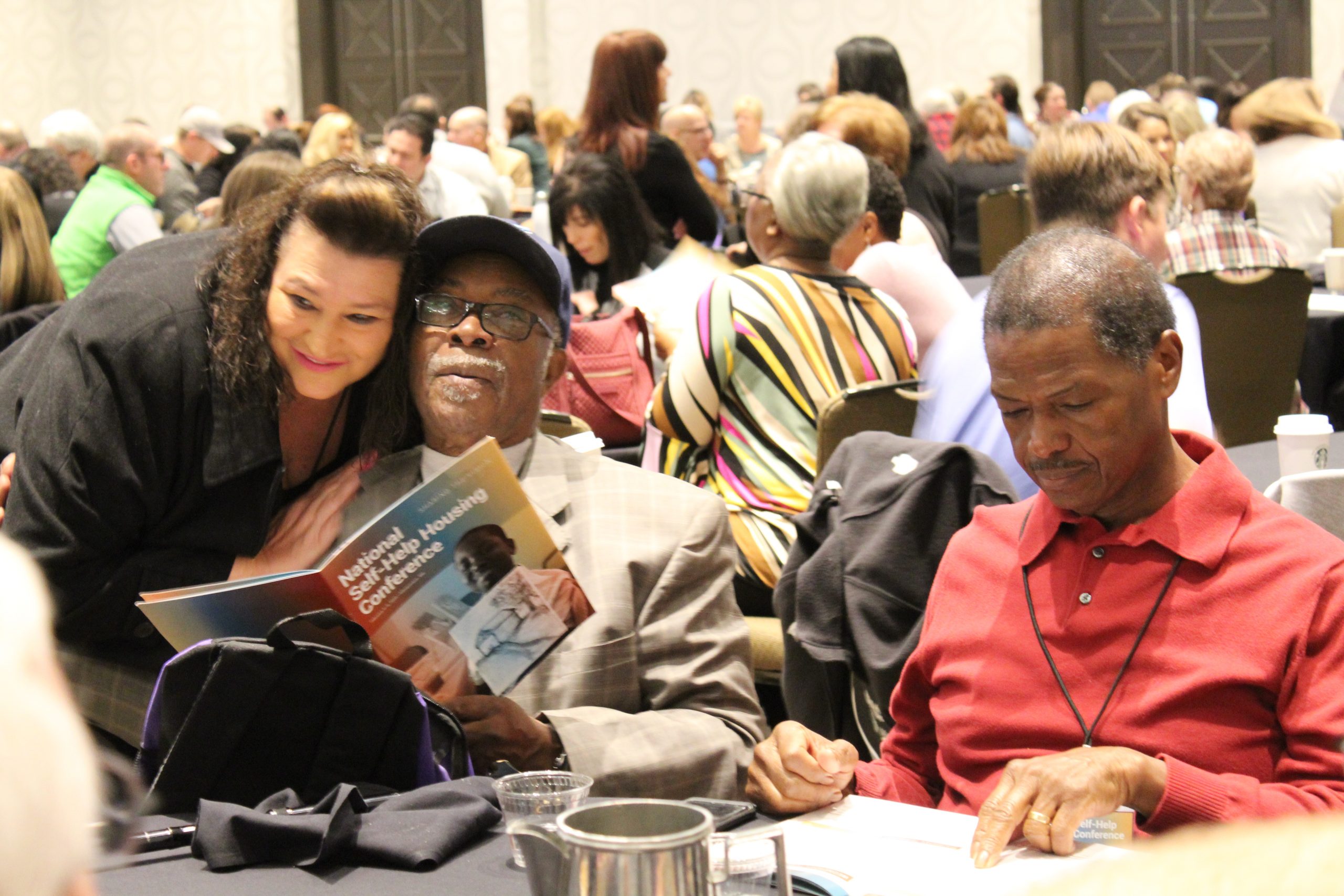Remarks by Tom Collishaw at the National Self-Help Housing Conference
Remarks by Tom Collishaw at the National Self-Help Housing Conference

Posted on February 27, 2020
National Self-Help Housing Conference, Feb. 4, 2020, Albuquerque

First, it’s always great to gather with the most inspirational group of affordable housing people in the country – those who have committed to work in the mutual self-help housing program. Thanks for this great opportunity.
I addressed the last national conference nearly five years ago in San Antonio, making remarks about how those of us who work in the self-help program share a specific DNA, and how that critical gene informs our everyday actions.
This time I’m going to take a different tack; one that acknowledges our history but also takes stock of our present, and encourages us all to think about the future of the self-help program.
My organization, Self-Help Enterprises, has been at this for a long time. We just celebrated our 55th year as a nonprofit, but the earliest pilot projects began in 1963 in a little community of just over 1,000 residents called Goshen, California in Tulare County. I recently came across a study done by Richard Margolis, who was an early chronicler of mutual self-help housing, dated June 5, 1967. It was entitled “A Preliminary Look at the Impact of Self-Help Housing upon Participating Families,” and it sought to tabulate results of one of the first building groups in Goshen as the program was gaining traction nationally. In fact, he reported that there were nearly 50 organizations with self-help housing programs around the country during the time of the report.
Specifically, Margolis wanted to test the claims proponents made about the benefits of self-help housing:
- Renews a person’s confidence in themselves and sharpens a sense of personal achievement
- Teaches marketable skills
- Encourages maintenance of the home
- Fosters family stability
- Trains participants in the arts of cooperation and communication, opening pathways to new social opportunities
- Converts tax consumers into taxpayers
- Sweeps away the “sickly sense of uselessness that often afflicts the poor”
Wow. Pretty ambitious stuff for the pioneers of our program. The early results? Margolis found that of the 10 families studied, seven out of the ten families improved their employment situations. All ten continued to reside in their self-help homes. Of the 26 children in Goshen’s Head Start program, 12 came from the children living in self-help homes. All ten families reported an improved living environment. In summary, Margolis said “it would appear that self-help housing can be a very useful weapon in the war against poverty. On the whole, it does renew self-confidence; it does encourage home maintenance, foster family stability, and open the way to new social opportunities; and it does convert tax consumers into tax payers.”
Now we have at least 55,000 families who built homes through the self-help program.
Even now, as self-helpers, we are dreamers, and we use a lot of dream themes over and over – dreams into reality, building the dream, American dream, achieving the dream – am I right? Who hasn’t used that in their promotional materials?
But that’s not really what we do. We aren’t the ones who create or nurture the dream – people come to us because they’ve already done that. They already have the rocket fuel that is the dream. What we do is provide them the opportunity to pursue their dream….and the rest is up to them. We are the facilitators, the “enablers” if you will. We provide the rocket ship for their fuel.
We make opportunity happen.
This is a critical role. I like to say that every success story starts with an opportunity. It can be that one teacher that connects with a lost kid, a family member who continues to believe in you even when you screw up, a coach who pushes you beyond what you ever thought you could do, a friend who doesn’t judge but calls you on your untruths. At our best we provide people with an opportunity, often when they can’t believe it’s possible.
We make opportunity happen.
So what makes our beloved self-help program different? It’s an important question in today’s world, where things become popularized at lightning speed through social media. It is also a time when single family homeownership gets lost in many of the public conversations about “affordable housing,” which most people relegate to the homeless challenge and large rental housing projects.
Self-help housing, in my view, is at a crossroads. And we’ll need to adapt to survive. Let’s face facts – we’re building less homes nationally than we once did on an annual basis; our TA costs are rising in an a way that may be unsustainable; our building methods are creating longer construction periods which threaten the survival of the mutual self-help model.
There are reasons for all of these trends, of course, and when we get together, we tend to focus on them incessantly – RD isn’t processing my loans or are wrongly denying loans; the building codes are getting stricter; we’ve got NIMBYs delaying or causing denials of our projects; the labor requirements are too strict; the group isn’t cooperating; etc. These things are all real and a daily feature of our lives trying to deliver this complicated program.
Yet we make opportunity happen.
For the program to thrive, I believe we will have to embrace and accentuate what makes our program different – which is first and foremost the shared labor component. Mutual self-help housing is a work program. That’s one of the reasons it has always enjoyed great support by politicians of all political stripes. But we also should embrace our history. When I read The Color of Law, a book by Richard Rothstein published in 2017, I was blown away by the extent to which we built racism and disenfranchisement into our public institutions. The subtitle of the book is “A Forgotten History of How Our Government Segregated America.” By far, most individual household wealth in America was amassed between World War II and 1975….exactly when people of color were largely left out of the home ownership market. It occurs to me that self-help housing has been one small antidote to this trend, since much of our program has been utilized by people of color. So asset building is a huge part of our program, and we should celebrate it.
We make opportunity happen.
We have to understand the new realities of government resources, including staffing in our governmental agencies. Most of us have already adapted to less RD staff, by, lets face it, doing more and more of the jobs they once did. We need to remind everyone that this is part of our mission as well.
We make opportunity happen.
We’re also going to have to change the program to keep up with the times. We need more flexibility in the labor requirements, some just to accommodate regional differences. We also need to embrace a continuous funding model. Self-help housing works best as a program rather than as a single project. The continuous funding model allows for flexibility and changing plans in mid-grant to meet current market realities or opportunities. We also need to give grantees more control over their own destinies, starting with full access to online submittals. We should aspire to become direct endorsement loan underwriters for our homebuilders. And we’ll need to embrace technology. Every time one of our staff says that our homebuilders aren’t tech-savvy, I remind them that every family I encounter has a smart phone.
We make opportunity happen.
We all have had the experiences of people getting the keys to their homes, their pride of accomplishment and excitement about their futures. When you’ve been doing this work for as long as I have, you get the chance to meet subsequent generations of self-help home builders, the progeny of opportunity.
I’ll mention two that I have recently met and become acquainted with. One is Arsenio Mataka, whose parents built a self-help home in Stanislaus County in the 1970’s. I met Arsenio through his work in California State’s Environmental Protection Agency, where he headed up a data and mapping effort to focus on disadvantaged communities across the state in order to more effectively target state resources. Arsenio now is one of the main lieutenants of Xavier Becerra, the Attorney General of California. Arsenio has publicly stated that “without the home my family built years ago, none of the success my brothers and sisters have achieved would be reality.”
We make opportunity happen.
The other legacy acquaintance was made more recently. While we were doing a meet and greet with a large central California building contractor interested in working on our large rental housing construction projects, I was introduced to their Business Development Director, a woman in her 30’s named Esther Cuevas. When I asked if she knew anything about SHE, she lit up. Her parents, field workers in the Madera County area, first encountered SHE when they rented an apartment at our USDA RD 514 project in La Vina. She called that the first home she lived in where she felt safe. Later, her parents built their home about 300 feet away in our self-help project in La Vina in the early 1990s. That home is what she refers to as the “launching pad” for her education and career.
The question I always ask successful children of self-help homebuilders is “where do you celebrate Thanksgiving?” and the answer is always the same. Regardless of what they’ve achieved in their lives or where they themselves now live, it’s always the self-help home where they congregate.
We make opportunity happen. And now we must embrace the opportunity to reinvigorate our own program.
One way to make sure we continue to build on these opportunities is by joining the National Rural Self-Help Housing Association. All of the issues that I outlined have been proposed by stakeholders led by NRSHHA. Learn more about it at our exhibitors table and come to our meeting tomorrow at 5:15. We advocate, educate, and collaborate.
Here’s the best thing about working in the self-help housing program – we get to wake up every morning with the possibility of enabling a family to change their life. We do this by making opportunity happen. That was true in 1967, and it’s true now. And that is a pretty great thing.
Photos provided by RCAC.


Recent Posts
- BCLT Groundbreaking Marks New Affordable Homes in Bakersfield!
- Celebrating NeighborWorks Week and 300th Home Milestone in Planada!
- Groundbreaking Marks New Chapter for Tombstone Water System
- Southwest Fresno Families Celebrate Their Self-Built Homes
- Celebrating the Grand Opening of River Grove in Oakhurst!
Recent Comments
Archives
- August 2025
- June 2025
- May 2025
- April 2025
- February 2025
- January 2025
- December 2024
- November 2024
- October 2024
- September 2024
- August 2024
- July 2024
- June 2024
- April 2024
- February 2024
- January 2024
- December 2023
- October 2023
- September 2023
- August 2023
- July 2023
- June 2023
- May 2023
- April 2023
- March 2023
- February 2023
- December 2022
- October 2022
- September 2022
- August 2022
- July 2022
- May 2022
- December 2021
- October 2021
- September 2021
- August 2021
- July 2021
- June 2021
- May 2021
- April 2021
- March 2021
- January 2021
- December 2020
- November 2020
- October 2020
- September 2020
- July 2020
- June 2020
- May 2020
- April 2020
- March 2020
- February 2020
- January 2020
- December 2019
- November 2019
- October 2019
- September 2019
- August 2019
- July 2019
- June 2019
- May 2019
- April 2019
- March 2019
- February 2019
- January 2019
- December 2018
- November 2018
- October 2018
- September 2018
- August 2018
- July 2018
- June 2018
- May 2018
- April 2018
- March 2018
- February 2018
- January 2018
- December 2017
- November 2017
- October 2017
- September 2017
- August 2017
- July 2017
- June 2017
- May 2017
- April 2017
- March 2017
- February 2017
- January 2017
- December 2016
- November 2016
- October 2016
- September 2016
- August 2016
- July 2016
- June 2016
- May 2016
- April 2016
- March 2016
- February 2016
- December 2015
- November 2015
- October 2015
- September 2015
- August 2015
- July 2015
- June 2015
- May 2015
- April 2015
- February 2015
